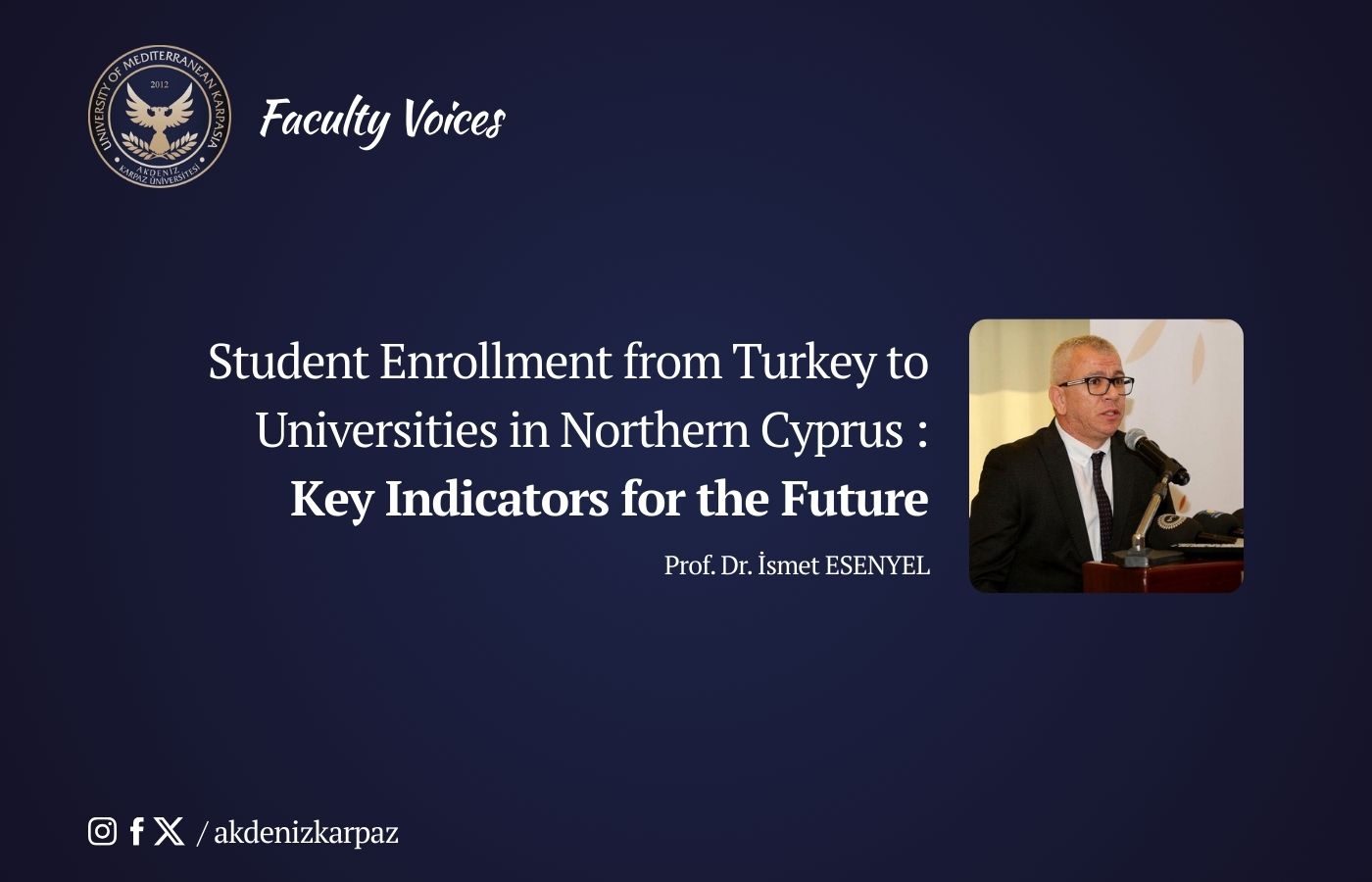The students who will be enrolling in universities in the Turkish Republic of Northern Cyprus (TRNC) for the Fall 2025 semester through direct admission from Turkey will provide us with important signals regarding future trends. During my tenure as Undersecretary, I often emphasized a key statement in the Turkey-TRNC cooperation committees:
“Higher education must be transformed from an unplanned tourism model into a state policy.”
The tourism industry is the world’s largest service sector. One of the sub-sectors most significantly influenced by global tourism is higher education. Some individuals travel abroad for a year to learn a foreign language such as English, French, or German, while others leave their homes to pursue undergraduate, graduate, or doctoral degrees.
As is widely known, student mobility the movement of students from one country to another within an academic calendar and then returning creates remarkable dynamism in the global economy. Spending at least nine months in the destination country and contributing to its industry and social life marks a significant economic phenomenon.
We must not forget how cities like Kyrenia, Nicosia, and Famagusta turned into ghost towns during the pandemic, and how almost all sectors came to a standstill in the absence of students. In large metropolitan areas, universities form the heart of the city. So-called “city universities” breathe life into the regions they are located in, both in name and function. Notable examples include Oxford, Edinburgh, Cambridge, New York State University, and the University of Chicago. The ecosystems created by such institutions are so powerful that their impact extends far beyond traditional tourism. Unlike tourists who may only stay for one or two weeks, purchase a flight ticket, and spend money for leisure or business, international students residing for nine months generate consistent economic activity.
Countries that host such students benefit across sectors from supermarkets to local markets, from barbers to taxi drivers, cafes, banks, accommodation facilities, and restaurants. In island nations, this form of extended stay is an essential component of alternative tourism models.
The Loss of Momentum in Northern Cyprus’ Higher Education Sector
Northern Cyprus was once a pioneer in university development years ahead of the Greek Cypriots and this achievement was once a source of national pride. However, in the last three to four years, the higher education sector has faced a decline in brand value and image, particularly in terms of attracting international students.
Both YÖDAK (Higher Education Planning, Evaluation, Accreditation and Coordination Council) and YÖK (Turkish Council of Higher Education) must analyze this loss of momentum effectively and take appropriate action to reinvigorate the sector. Just a few years ago, student numbers approached 100,000. Recently, that number has fallen to around 60,000–65,000.
At this juncture, it is critical that comprehensive reforms be introduced in Northern Cyprus’s higher education strategy.
First, a Medium-Term Plan (MTP) for 2025–2030 should be developed, followed by a Strategic Plan for 2030–2035, to establish a planned and sustainable higher education ecosystem.
The following recommendations are crucial:
1. International Student Recruitment and Migration Management
The TRNC must develop a sustainable system for recruiting international students, managing their residency, and regulating their entry and exit procedures on the island.
2. Expansion of Postgraduate Programs
YÖDAK should support universities by extending residence durations for students in master’s and doctoral programs. These programs, globally, are often designed to accommodate working professionals.
3. International Partnerships and Dual Degree Programs
Bilateral agreements that universities establish with international institutions such as affiliations, 2+2 or 3+1 exchange models must be revised and repurposed to benefit both the universities and the TRNC. Dual degree and joint degree programs should be encouraged and given special status.
4. Visa Policy Reform
The current policy of dual visas and transit restrictions, which involves 57 countries, should be limited to a maximum of 20 nations to ensure better control and efficiency.
5. Support for International Accreditations
Accreditation efforts that increase institutional competitiveness should receive financial backing from the government to help universities compete globally.
6. Scholarship Distribution through ÖSYM
It is vital for stakeholders to properly analyze the fact that 89.4% of students placed into TRNC universities by ÖSYM receive full, 75%, or 50% scholarships. This high scholarship ratio has serious implications for financial sustainability and institutional planning.

